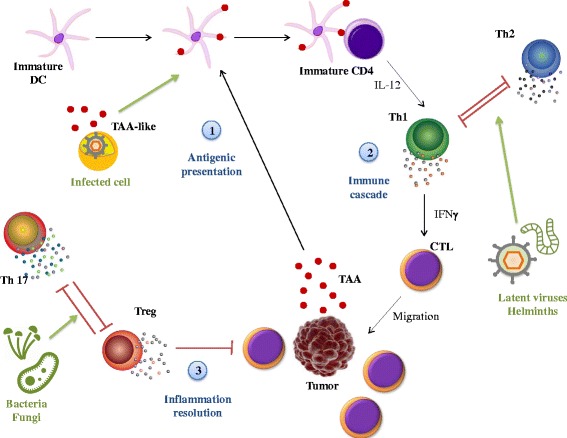Fig. 1.

Shared immune responses to infections and cancer cells. The immune system’s action on cancer cells relies on three main steps: antigenic presentation, immune cascades and inflammation resolution. Infected cells can express TAA-like antigen which will activate DC subset. DC will prime Th cells to differentiate into Th1 cells. However, latent viruses and helminths could polarize Th cells toward a Th2 response. Finally, bacterial and fungal infections could disequilibrate inflammation resolution by activating Th17 cells that down-regulate Treg cells. (DC: dendritic cells; TAA: tumor associated antigens; Th: T helper cell; CTL: cytotoxic T cells, Treg: regulatory T cells; IFNγ: interferon γ; IL: interleukin)
